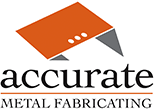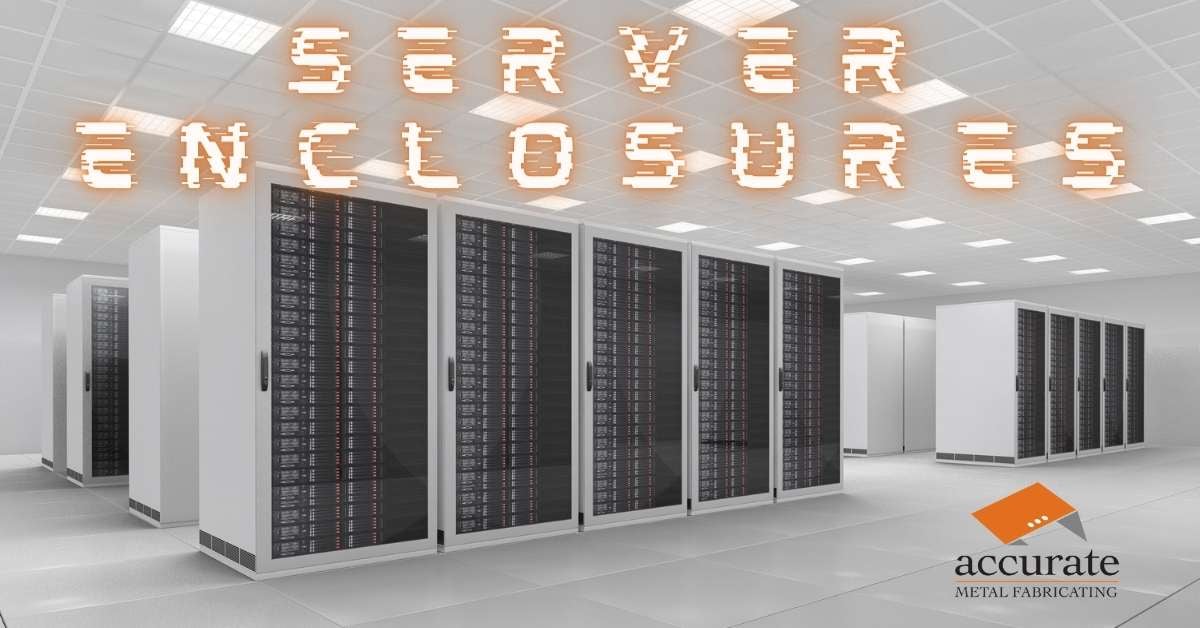A server enclosure, also known as a server cabinet or chassis, is similar to a server rack but typically includes additional security, cooling, and environmental protection features. At Accurate Metal Fabricating, we work with OEMs in the data center space to help them engineer and project manage their high-volume custom server enclosures for new and current data center centers.
The Future of Server Enclosures
Are you new to data centers and need help figuring out where to start? Here are some critical aspects of a server cabinet and the materials commonly used that you should be aware of:
- Construction Material: Server enclosures are most often made from steel. Steel offers robustness, strength, and durability for your racking needs. Carbon or mild steel tends to be the most economical type of metal. But if you need a lighter rack or will be stored in a corrosive or outdoor environment, you should look to another metal. Aluminum, another common server rack metal, could be a better alternative for your enclosure needs when the environment or weight is a concern.
- Doors and Panels: Server enclosures have front and rear doors and side panels. These doors and panels may be solid or perforated to allow airflow while providing security and protection against dust and physical tampering. Having doors on both sides can be very beneficial when moving racks in and out. Side panels can also be fabricated to be removable, which could benefit specific industries.
- Locking Mechanisms: Enclosures typically have lockable doors restricting access to authorized personnel. These locking mechanisms include key locks, combination locks, electronic locks, or biometric authentication systems. Security is an essential part of any data center, so it's important to factor in the locking mechanism of this critical piece of IT infrastructure.
- Cooling Systems: Enclosures often feature built-in ventilation systems or provisions for installing fans and cooling units. In addition to fans, water cooling, and more, perforated metal is the most common type of "passive" cooling. Specific patterns are selected to ensure the proper airflow is available to keep the equipment naturally as cool as possible. These systems help maintain optimal operating temperatures for the equipment inside the enclosure, preventing overheating and ensuring reliability.
- Rack Mounting: Like server racks, enclosures have mounting rails inside where IT equipment installations occur. These rails come standardized to accommodate rack-mounted devices with 19-inch or 23-inch spacing. Using industry standards makes your internal racking more universal if you need to move or reuse an enclosure from one company to another.
- Cable Management: Server enclosures include cable management features such as cable trays, routing channels, and tie-down points. These systems organize and secure cables, reducing clutter and improving airflow within the enclosure. The more organized your cables are, the easier IT teams can maintain the data center's systems.
- Environmental Protection: Some server enclosures are designed to protect against environmental factors such as dust, moisture, electromagnetic interference (EMI), and physical impacts. They may have sealed gaskets, IP-rated ingress protection, and grounding features.
- Finish and Coating: The exterior of server enclosures is often finished in black, utilizing the powder coating process. Powder coating enhances durability, aesthetics, and resistance to scratches and corrosion. It also makes it easy to customize the enclosure. For instance, you may want a blue server enclosure to represent one item and red to represent another. This flexibility allows you to quickly identify specific racks when maintenance needs to be performed in a particular area.
Custom Servers Structures
While meeting industry standards is essential to ensure components from various manufacturers fit your enclosure, sometimes you need something that isn't a standard – thinking "outside the box," if you will. Accurate Metal Fab's on-staff engineers can help you during the design and prototyping phase. We understand the unique demands of data centers, including hot and cold aisle containment systems.
When partnering with Accurate, get ready for White-Glove service and treatment:
- Project Manager: Your job is assigned a project manager who will see your data center from your initial idea to delivery and after. They are with you each step of the way, ensuring you know where your job is within the system.
- Engineering: One of AMF's unique strengths is our team of engineers, who can help with almost any project. We are experts at making your designs more efficient, which often saves you money by utilizing less material.
- Prototyping: We know getting the design right is critical. Especially with data centers due to the high volume nature of the required enclosures and racking systems. We will prototype for you until you're satisfied with the design.
- Warehousing and Assembly: We have ample space to support your warehousing needs for JIT programs. Being centrally located in the suburbs of Chicago gives us easy access to raw materials and quick shipping to anywhere in North America.
- Perforating: Critical for airflow in data centers, our sister company, Accurate Perforating, is one of the largest metal perforators in North America. When you partner with AMF, you get access to all the Accurate Family of Companies offers.
Overall, server enclosures offer a more secure and controlled IT equipment environment than standard server racks. They are ideal for applications where equipment needs protection from environmental hazards, physical intrusion, and unauthorized access.



